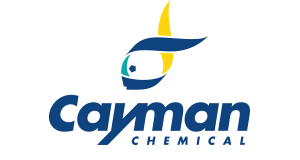Azithromycin-13C-d3, CAS 2750534-82-6
Azithromycin-13C-d3, CAS 2750534-82-6
SKU
CAY30653-500
Packaging Unit
500 µg
Manufacturer
Cayman Chemical
Availability:
loading...
Price is loading...
Shelf life (days): 1460.0
Formulation: A solid
Formal Name: (2R,3S,4R,5R,8R,10R,11R,12S,13S,14R)-2-ethyl-3,4,10-trihydroxy-13-(((2R,4R,5S,6S)-5-hydroxy-4-methoxy-4,6-dimethyltetrahydro-2H-pyran-2-yl)oxy)-11-(((2S,3R,4S,6R)-3-hydroxy-6-methyl-4-(methyl(methyl-13C-d3)amino)tetrahydro-2H-pyran-2-yl)oxy)-3,5,6,8,10,12,14-heptamethyl-1-oxa-6-azacyclopentadecan-15-one
Purity: ≥99% deuterated forms (d1-d3)
Formula Markup: C37[13C]H69D3N2O12
Formula Weight: 753.0
CAS Number: 2750534-82-6
Notes: Azithromycin-13C-d3 is intended for use as an internal standard for the quantification of azithromycin (Item No. 15004) by GC- or LC-MS. Azithromycin is a macrolide antibiotic.{22758} It is active against S. pneumoniae, S. aureus, N. gonorrhoeae, M. pneumoniae, H. pylori, C. trachomatis, and H. influenzae in vitro (MIC90s = S. pyogenes, S. pneumoniae, E. faecalis, or H. influenzae infection (ED50s = 0.78, 8.7, 12.7, and 30.3 mg/kg, respectively).{53594} It inhibits replication of severe acute respiratory coronavirus 2 (SARS-CoV-2), but not Middle East respiratory syndrome CoV (MERS-CoV), when used at concentrations of 5 and 10 µM.{57523} Azithromycin also decreases plasma levels of IL-6, TNF-α, and IL-1β and increases survival in a mouse model of LPS-induced sepsis when administered at a dose of 100 mg/kg.{53595} Formulations containing azithromycin have been used in the treatment of a variety of bacterial infections.
Formulation: A solid
Formal Name: (2R,3S,4R,5R,8R,10R,11R,12S,13S,14R)-2-ethyl-3,4,10-trihydroxy-13-(((2R,4R,5S,6S)-5-hydroxy-4-methoxy-4,6-dimethyltetrahydro-2H-pyran-2-yl)oxy)-11-(((2S,3R,4S,6R)-3-hydroxy-6-methyl-4-(methyl(methyl-13C-d3)amino)tetrahydro-2H-pyran-2-yl)oxy)-3,5,6,8,10,12,14-heptamethyl-1-oxa-6-azacyclopentadecan-15-one
Purity: ≥99% deuterated forms (d1-d3)
Formula Markup: C37[13C]H69D3N2O12
Formula Weight: 753.0
CAS Number: 2750534-82-6
Notes: Azithromycin-13C-d3 is intended for use as an internal standard for the quantification of azithromycin (Item No. 15004) by GC- or LC-MS. Azithromycin is a macrolide antibiotic.{22758} It is active against S. pneumoniae, S. aureus, N. gonorrhoeae, M. pneumoniae, H. pylori, C. trachomatis, and H. influenzae in vitro (MIC90s = S. pyogenes, S. pneumoniae, E. faecalis, or H. influenzae infection (ED50s = 0.78, 8.7, 12.7, and 30.3 mg/kg, respectively).{53594} It inhibits replication of severe acute respiratory coronavirus 2 (SARS-CoV-2), but not Middle East respiratory syndrome CoV (MERS-CoV), when used at concentrations of 5 and 10 µM.{57523} Azithromycin also decreases plasma levels of IL-6, TNF-α, and IL-1β and increases survival in a mouse model of LPS-induced sepsis when administered at a dose of 100 mg/kg.{53595} Formulations containing azithromycin have been used in the treatment of a variety of bacterial infections.

 Deutsch
Deutsch







